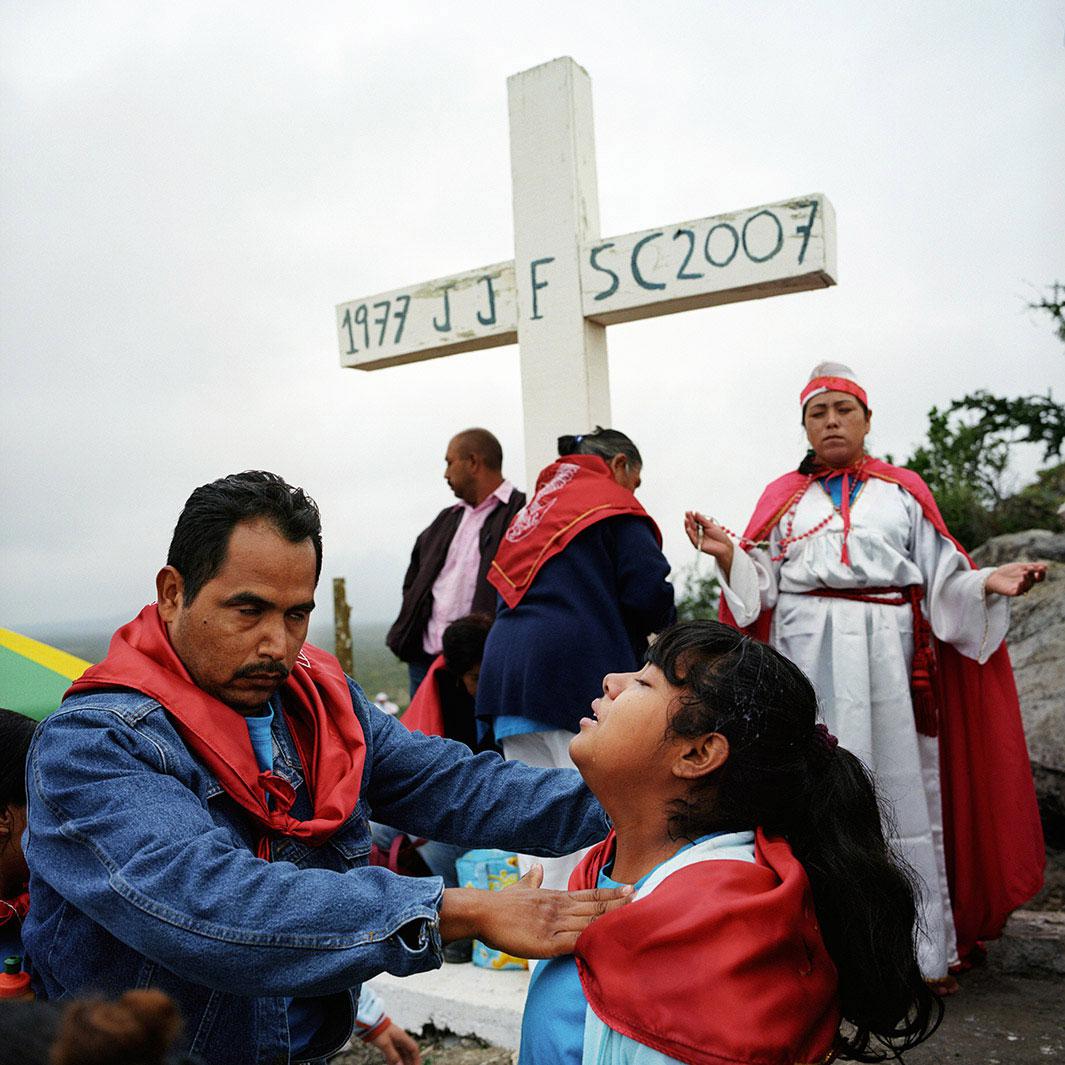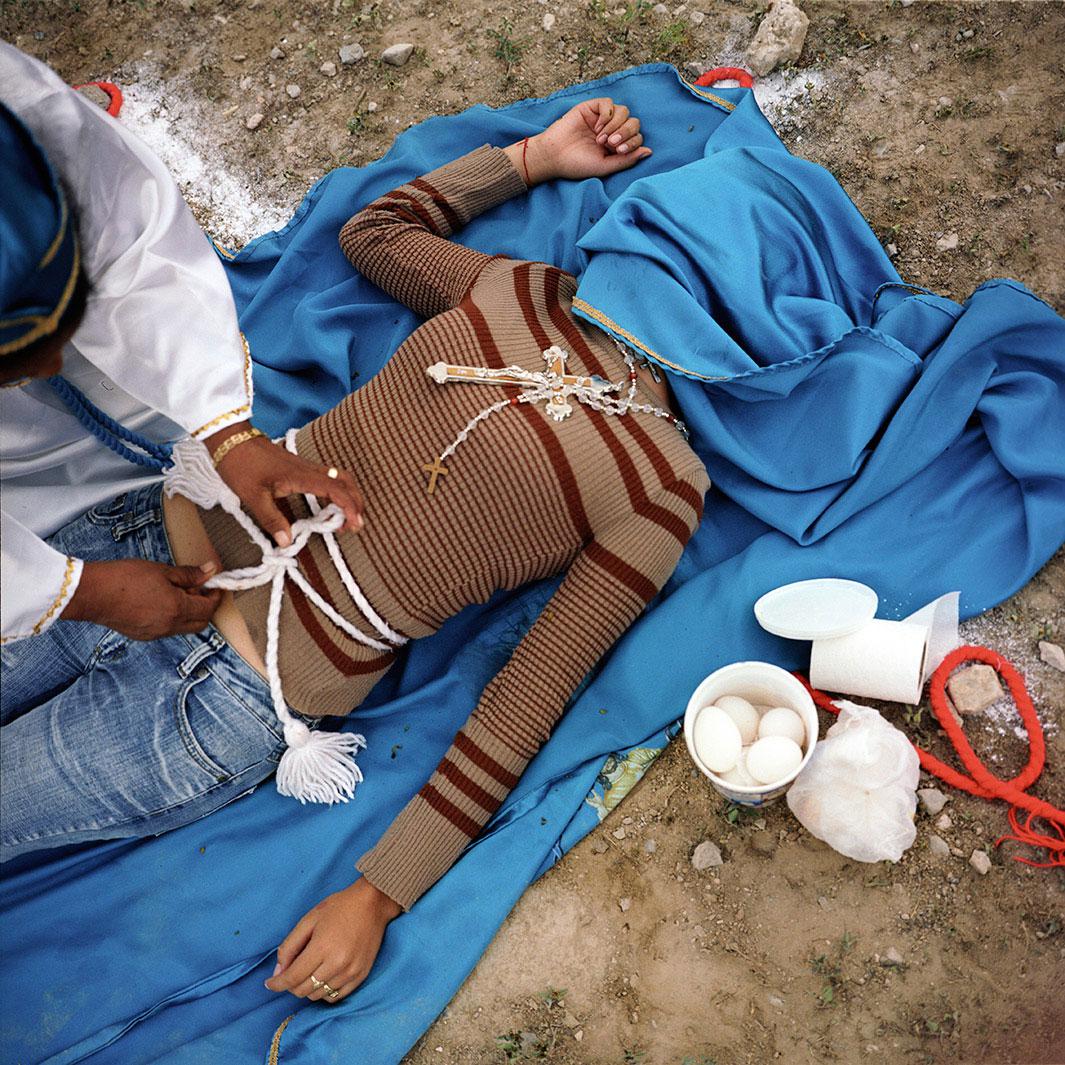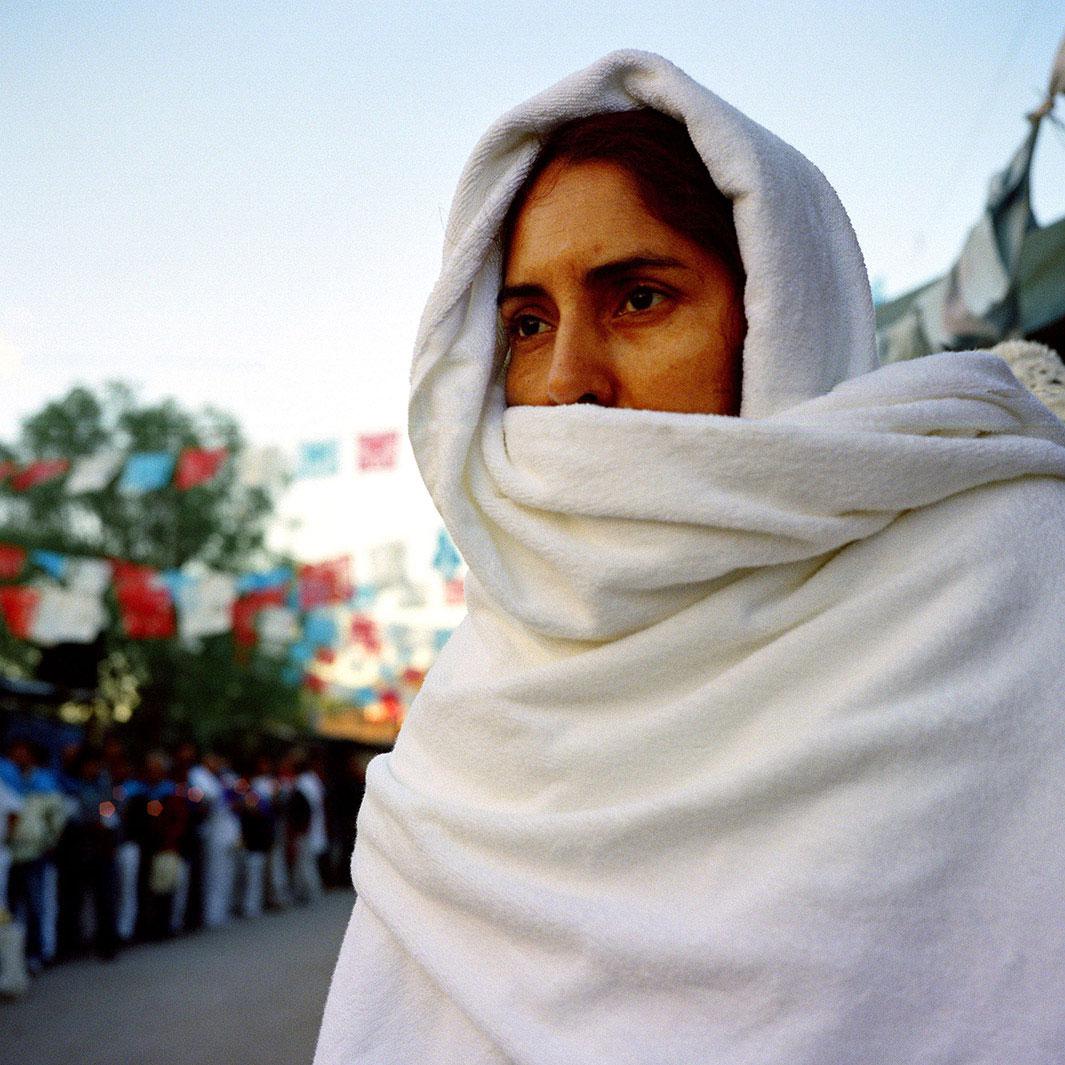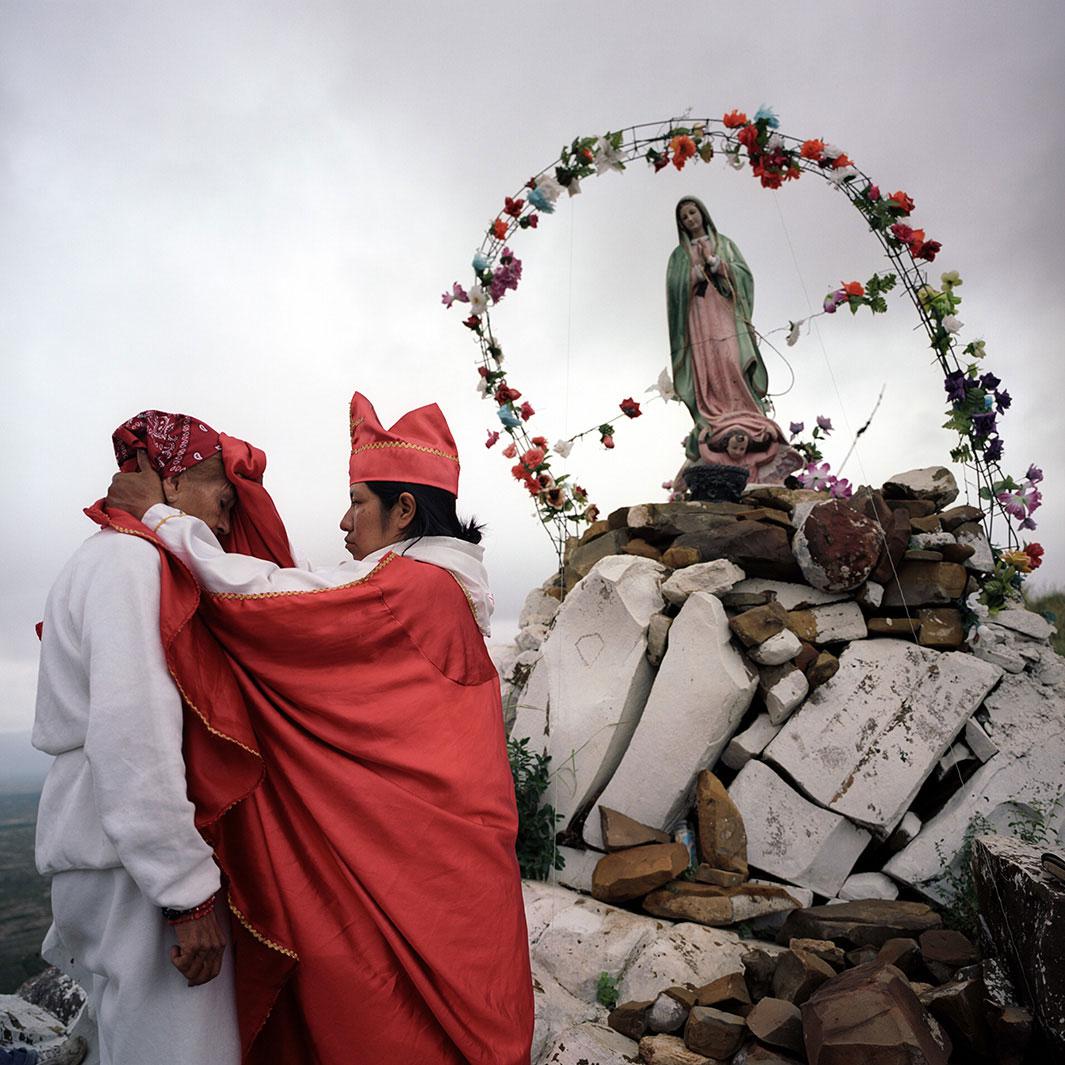In Mexico, curanderos, or traditional healers, have long served an important role in peoples’ medical and spiritual lives. A select few have even become celebrities. In the early 20th century, El Niño Fidencio became one of the country’s most famous curanderos and was considered a miracle worker. Today he is regarded as a folk saint by thousands of his devotees, or fidencistas.
In the 1990s, photographer Scott Dalton heard about a pilgrimage of Fidencio followers in Espinazo, Mexico, from friends and decided to check it out. He returned to Espinazo again in 2006 and 2009 to document the festival for his series “Faith Healers.” “What interested me in the project was just the idea of faith, and how it takes a variety of forms in peoples’ lives. This project just looks at one part of that, but I think it serves a reminder of how important faith is for so many people throughout the world, and how we all come to terms with our own belief system within the context of our own society and environment,” he said via email.
At the pilgrimage, Dalton said, thousands of followers gather to commemorate important dates in Fidencio’s life as well as participate in religious services and healings. Fidencistas believe that modern-day curanderos can channel the spirit of Fidencio and that under his influence they can use his powers to perform healings. Dalton said he witnessed these transformations, in which the eyes of curanderos would roll back and they’d assume a high-pitched voice. “Obviously, there is a strong following,” Dalton said. “I think in Mexico people have a very strong sense of faith and religion plays an important part in their lives, but like anywhere there are varying degrees of belief. These events attract followers from all over the region, so for many this pilgrimage is an important part of their faith.”

Scott Dalton


Dalton said the environment at the pilgrimage is usually festive and that people were generally open to being photographed after he asked permission. “The only hard part is getting there and finding a place to stay. One year I had to camp out in somebody’s yard. They were a very nice family and it turned out the man of the house was also a curandero,” he said.
Though El Niño was a Roman Catholic, the Catholic Church does not officially recognize him as a saint. According to Antonio Zavaleta, professor of anthropology at the University of Texas at Brownsville, in Mexico and in Mexican communities in the United States today, curanderos are often the first people someone who is feeling ill or emotionally upset will consult. “Most curanderos are wise enough to know that if they encounter a serious problem, something they can’t treat, they’ll recommend the person go to a doctor,” Zavaleta said in a phone interview.
Dalton said that although faith healing attracts people of various backgrounds, it tends to be a deeply felt part of one’s personal belief system. “What others may think or believe really matters little. If you believe hard enough in something, well, maybe it’s true,” he said.





